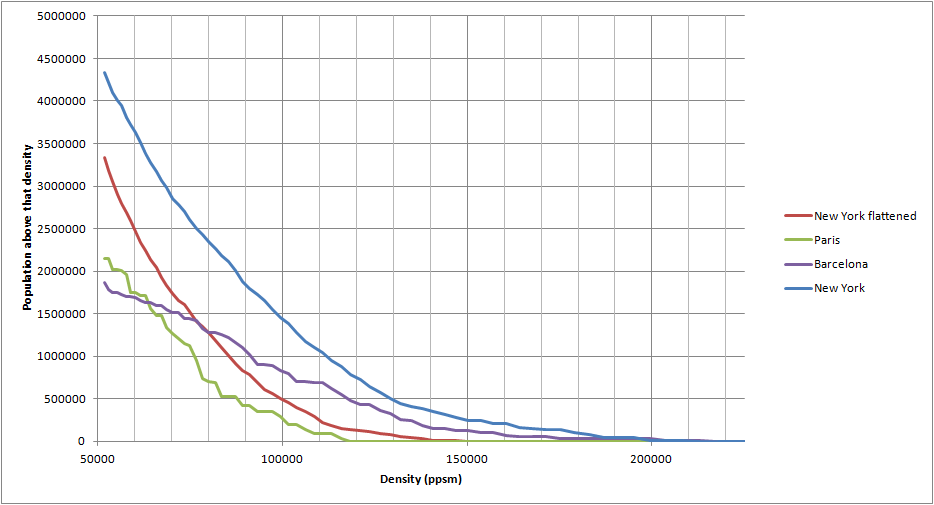I can send you my data on Toronto and other Canadian cities, Nei.
I took a shot at Paris and Barcelona, compared to New York at the urban area level, but the problem is they don't have the same size of units. For New York, there are census tracts, but for Barcelona and Paris, it was a mix of neighbourhoods and districts for the core cities, and a mix of neighbourhoods and munipicalities for the suburbs. The result is that the average population of the unit used was...
Paris: 20,462
Barcelona: 16,414
New York: 4,188
What I did was graph those as is, and also smooth out the NY data over sets of 5 nearby census tracts to try to cancel the effect of smaller units for NY.

Based of this, if I had census tract sized data for Barcelona and Paris, I would estimate that Barcelona would follow NYC quite closely for the first million people before dropping off with maybe around 2.5 million people above 50,000 ppsm. Paris I expect would follow the flattened (smoothed out) New York line before starting to separate around 2-2.5 million with also around 2.5 million people above 50,000 ppsm.
In Europe/North America, these are the cities that I expect would have the most high density, with Madrid being relatively close behind. In the East, Moscow and Tokyo seem like they would have less very high density areas, but might start overtaking Paris and Barcelona in the 20,000-50,000 ppsm range. Hong Kong and Seoul would most likely be ahead in the very high densities, it's just that I couldn't find detailed population data for them.